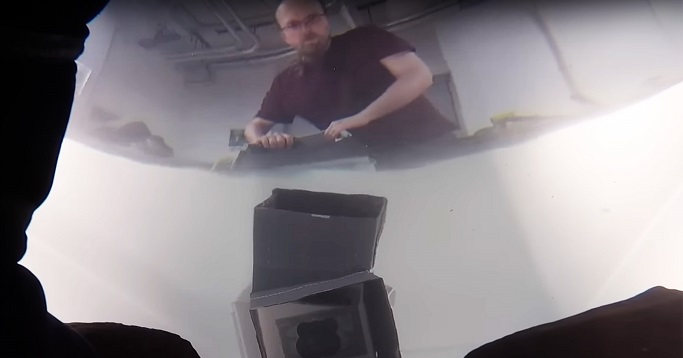Behind the lens - understanding ancient treasures with photography and imaging
JR Peterson, a research technician at the School of Histories, Languages and Cultures, answers questions about his fascinating line of work and how he applies his skills to help students and researchers alike along their academic journey.
Tell us what your research and work is about?
As a technician, specialising in photography and imaging, I support many different research projects with skills and technique expertise. I provide some of the foundations in these projects to allow us to capture evidence and present it to others visually. I’ve worked on cathedrals, ancient Egyptian coffins, 10,000-year-old bone tools and now a ~half million-year-old wooden structure from Zambia. With the Zambian wood, there were particular challenges as the material had to stay wet to preserve it, and was mostly black, meaning that any normal attempts to photograph it produced results indistinguishable from an upturned chocolate trifle. I devised a new method of photographing it underwater and constructed a custom underwater camera housing for the purpose.
What or who first inspired you to be interested in this area of research?
I first got into photography through events work 20 years ago, but being fascinated by all things technical, I began to rapidly build up substantial expertise on the subtleties of how the equipment works, and the limits of what it can be used for. This naturally fitted into the technician role working with archaeologists, who have some quite specific and detailed requirements around imaging. This expertise was recognised in 2019 when I was made an Accredited Imaging Scientist and Associate of the Royal Photographic Society.
What are you most proud of achieving during your career so far?
Honestly, it’s the small amount of teaching I get to do, I give students in the department a grounding in photographic technique while studying with us, which I hope will allow them to do better in their careers. Spreading knowledge is, after all, what we are here for, and this is the most direct way to witness it.
What techniques and equipment do you use to conduct your research?
A room (or suitcase for fieldwork) full of camera kit, but the important part is in the software and what I do with it all. My work includes some more advanced techniques to extract surface texture and 3D data using photography. Most of these techniques revolve around taking multiple images in different configurations and using software to leverage the differences between the images to extract additional information. Stereo photogrammetry is a great example of this, where many images (often hundreds) are taken of an object from different directions, and a full and detailed 3D model is built from these. This uses the same fundamental idea our brains use when building a 3D understanding of the world around us from moving around with 2 eyes.
Which other subjects are important for your work?
My work is an interesting crossover of archaeology with many different fields from the technical side. I’ve gone as far as to learn printed circuit board design to manufacture electronics in support some of the projects I’ve worked on, and I’m not afraid to get the soldering iron out. A keen understanding of the physics of optics and light is also important to what I do.
What do you think the key is to run a successful research project?
Simple – get a good team. I work as a specialist on these projects. While I’m very happy to run areas like developing and deploying the technology, I can’t do a research project without others doing the actual research. Teamwork is essential to any real endeavour, and this work is no exception.
What impact is your research having outside of academia?
In addition to the teaching mentioned above, which gives real people real skills; the work of the projects I’ve been involved in has helped promote cultural heritage protection against vandalism as well as help people understand their own heritage though museum outreach etc. I’ve also had a direct impact on preservation of heritage through digitising and photographing material – a good photo is no replacement for the real thing, but when the real thing no longer exists it’s much better than nothing.
How do you plan to develop your research in the future?
As I have always done, I will continue to explore what the technology can do, experiment on ways to make the techniques we already do better, and find new techniques that are being developed, working out how they can be deployed in the work we do. But looking at the bigger picture, my work depends on researchers finding questions about the archaeology they want to answer with my help.
What advice would you give to someone considering a career in research and technical work?
If you are the kind of person, who as a ten-year-old was more interested in taking things apart to see how they work than using them (clocks in particular had a short life expectancy in my house) then research technician could be a great career path for you. The only advice I can give there is to work with your curiosity, that’s more important than knowing what time it is. And if you are a parent of one of these, the only suggestion I can give is: keep buying clocks.
Where can readers learn more about your research?
You can read more about the work of our team on the University of Liverpool's Department of Archaeology, Classics and Egyptology website.
